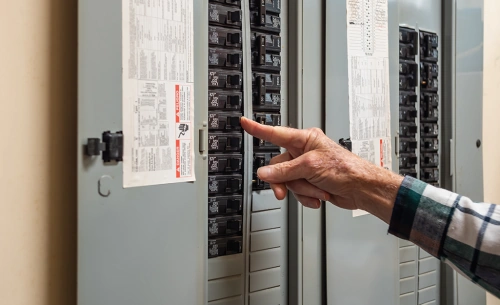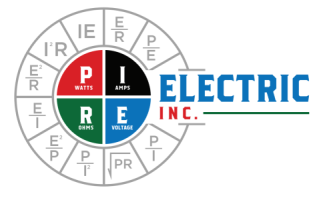Home Electrical Wiring
Most home electrical systems are designed to run off 120 volts with the exception of certain major appliances, such as an electric clothes dryer, electric hot water tanks, stoves and EV car charging station, etc, which can run off 240 volts.
Electricity enters a utility powered home by running through a power meter supplied by the local utility company, then, in most cases, through a master circuit breaker, and then to the home’s breaker box, and is managed by a fuse box or breaker panel.

From the breaker box, this flow of electricity is spread over numerous circuits to different parts of the home by first passing through individual circuit breakers which serve as a safety monitor to keep the circuit from being overloaded.
Then there is the yards of wiring running throughout your home and making everything in it work.
Electrical Wire and Circuit Breakers
Electrical wire and circuit breakers are designed to work in tandem with one another, and each must be of a proper corresponding size.
Standard wire sizes are used in most homes today for most lighting and wall outlets.
14/2 gauge electrical wire is rated to a maximum of 15 amps and should be used with than 15 amps circuit breakers.
12/2 gauge wiring is rated to a maximum of 20 amps. and 20 amp circuit breakers.
The heavier the gauge the larger the breaker, the more amperage the wire can carry.
Call 613-529-2229 today, and our trusted experienced electricians will be happy to discuss the type of service you expect from a local electrical contractor.
